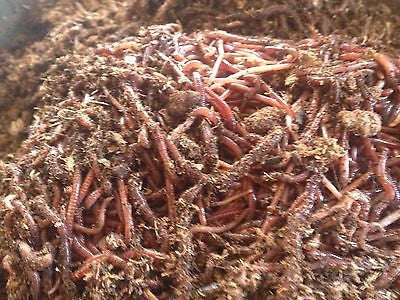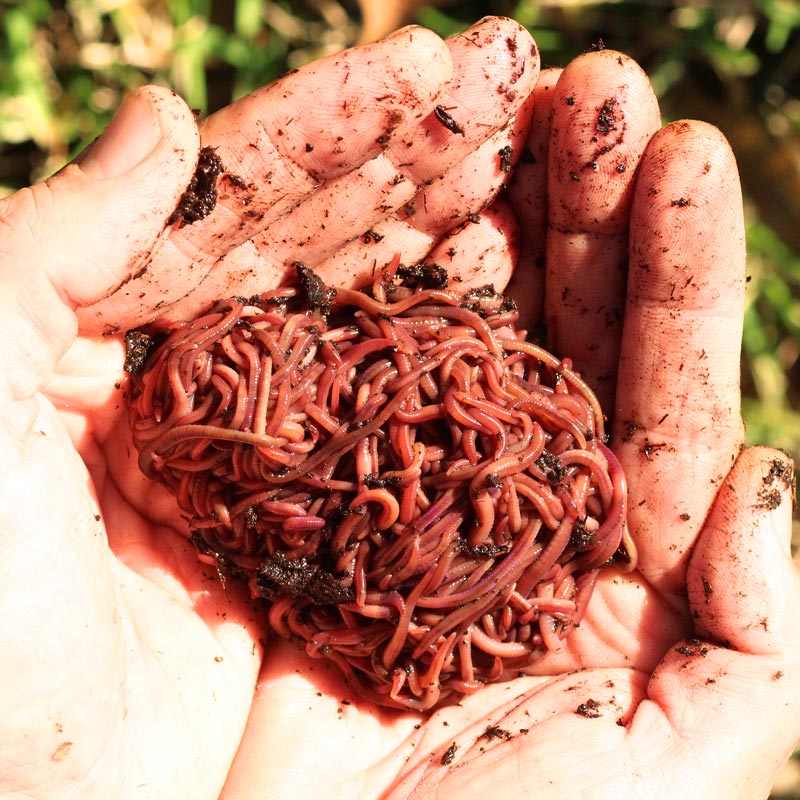Red Wiggler Worms Demystified: Unlocking the Tricks of Vermiculture for Greener Living and Nutrient-Rich Dirt
In the realm of sustainable methods for enriching dirt quality and advertising eco-conscious living, red wiggler worms play a pivotal yet typically overlooked function. These humble creatures possess the impressive capacity to transform organic waste into nutrient-rich spreadings that offer as a powerful all-natural plant food. By diving right into the globe of vermiculture, one can uncover a variety of benefits that prolong far past typical composting approaches. Understanding the details of taking care of these worms, enhancing their environment, and utilizing their spreadings can bring about a greener way of living and much healthier dirt for plants to grow.
The Function of Red Wiggler Worms
Red Wiggler worms play a crucial function in composting systems by efficiently damaging down raw material right into nutrient-rich spreadings. These ravenous eaters eat a range of organic products, such as cooking area scraps, lawn waste, and paper products. As they feed, the worms' digestive processes damage down the raw material right into a fine, dark, and nutrient-dense material understood as worm castings or vermicompost.
The spreadings produced by Red Wiggler worms are very valuable for soil health and plant development. They are rich in essential nutrients like potassium, phosphorus, and nitrogen, which are vital for supporting healthy and balanced plant development. Furthermore, worm castings consist of useful microbes and enzymes that assist improve dirt framework, boost water retention, and boost nutrient uptake by plants.
Advantages of Vermicomposting

It improves soil framework, boosts soil aeration, and enhances soil wetness retention. Vermicompost likewise improves the dirt with vital nutrients like potassium, nitrogen, and phosphorus, advertising plant growth and general dirt fertility.
Additionally, vermicomposting assistances lasting gardening techniques by giving a chemical-free and natural choice to artificial fertilizers. Red Wiggler Worms. This environmentally pleasant approach not only enriches the soil but likewise aids decrease reliance on harmful chemicals, promoting a greener and more sustainable method of gardening
Setting Up a Worm Bin
When developing a worm container for vermicomposting, correct setup is critical to make certain the success of the composting process. The very first action in establishing up a worm container is selecting an ideal container. This can be a plastic bin or wood box that offers sufficient space for the worms to walk around and has correct drain openings to stop waterlogging. Next, a bed linens material such as shredded newspaper, cardboard, or coconut coir must be included in the container. This bed linens offers a comfortable environment for the worms and aids keep dampness degrees.
After adding the bed linens, present the red wiggler worms to the bin. It is advised to begin with a handful of worms and gradually enhance as they increase. The worms should after that be provided with food scraps such as vegetables and fruit peels, coffee premises, and eggshells. It is vital to avoid adding meat, dairy products, oily, or salted foods to stop bring in parasites and developing unpleasant smells.
Routinely monitor the dampness levels and temperature level in the worm bin to guarantee optimal problems for the worms. With correct configuration and maintenance, the worm container will successfully convert natural waste right into nutrient-rich compost for your plants and yard.
Harvesting Worm Castings
To successfully collect nutrient-rich weblink worm spreadings from your vermicomposting system, a systematic harvesting method is crucial. There are a couple of essential steps to follow to make certain an effective procedure when it comes time to collect the worm castings. Stop adding fresh food scraps to one side of the worm bin for a pair of weeks before collecting. This urges the discover this info here worms to migrate sideways with fresh bed linen and food, making it simpler to scoop out the castings from the other side.

Troubleshooting Common Issues
Determining and attending to common obstacles that might occur throughout the vermicomposting procedure is important for preserving a effective and healthy and balanced worm container. One common concern that vermicomposters encounter is overfeeding. Including excess food scraps can result in a build-up of wetness and Clicking Here level of acidity in the worm bin, possibly hurting the worms. To stop this, feed the worms in small amounts, guaranteeing that the food scraps are sufficiently damaged down before including more. An additional problem is undesirable odors emanating from the worm bin. Foul scents show anaerobic conditions, typically brought on by overwatering or insufficient ventilation. To fix this, readjust the dampness degrees by adding dry bed linen materials like shredded paper or cardboard and increase oygenation by transforming the bedding on a regular basis.
Furthermore, if the worm population is declining or the worms appear unhealthy, it could be due to ecological stress factors such as extreme temperatures or pH degrees. Monitoring these variables and making essential adjustments is vital for the wellness of the worms. By troubleshooting these common concerns without delay, vermicomposters can make certain a effective and smooth vermicomposting process while maintaining a thriving worm populace.

Verdict
To conclude, red wiggler worms play a vital duty in vermiculture by breaking down organic matter right into nutrient-rich dirt. The advantages of vermiculture include greener living and improved soil high quality. Establishing a worm bin is essential for successful vermiculture, and harvesting worm castings supplies beneficial garden compost for gardening. By understanding and troubleshooting typical problems, individuals can unlock the secrets of vermiculture for lasting living and much healthier dirt.
As they feed, the worms' digestive system procedures damage down the organic matter into a fine, dark, and nutrient-dense product recognized as worm spreadings or vermicompost.
The castings produced by Red Wiggler worms are highly advantageous for dirt wellness and plant growth. Adding excess food scraps can lead to a buildup of moisture and level of acidity in the worm container, possibly damaging the worms.Furthermore, if the worm population is decreasing or the worms appear harmful, it can be due to ecological stress factors such as extreme temperature levels or pH levels. Setting up a worm bin is crucial for successful vermiculture, and collecting worm castings provides beneficial garden compost for gardening.